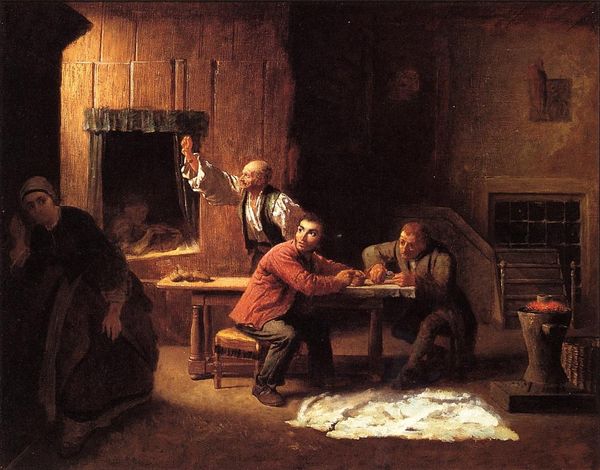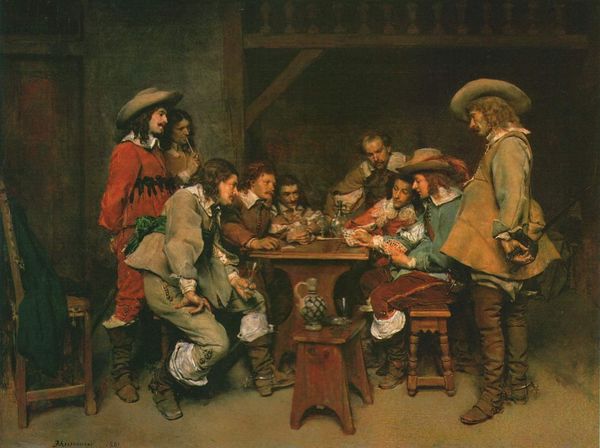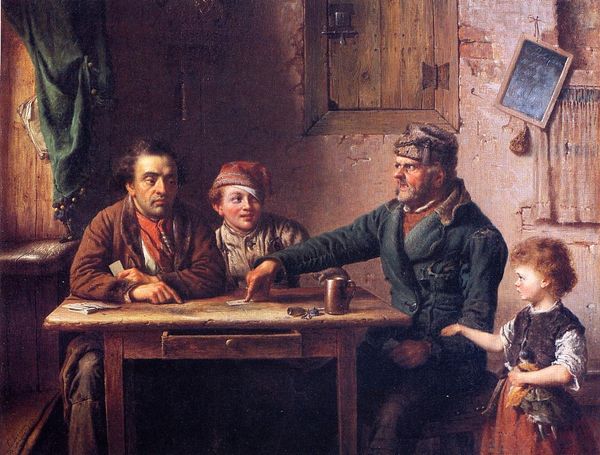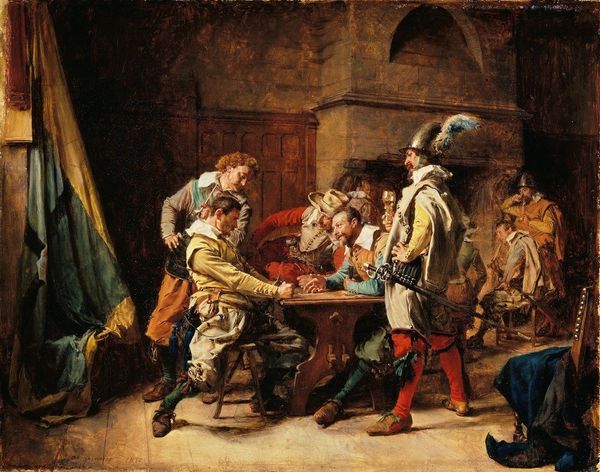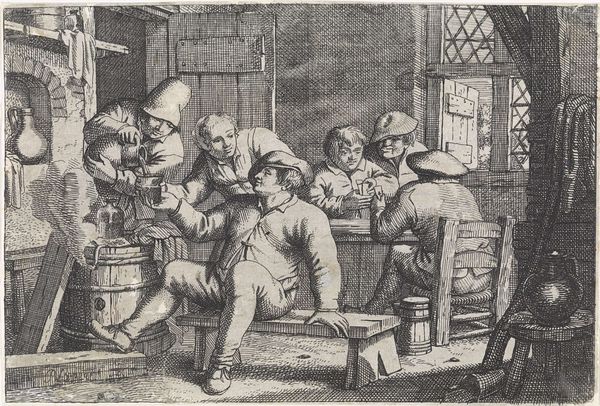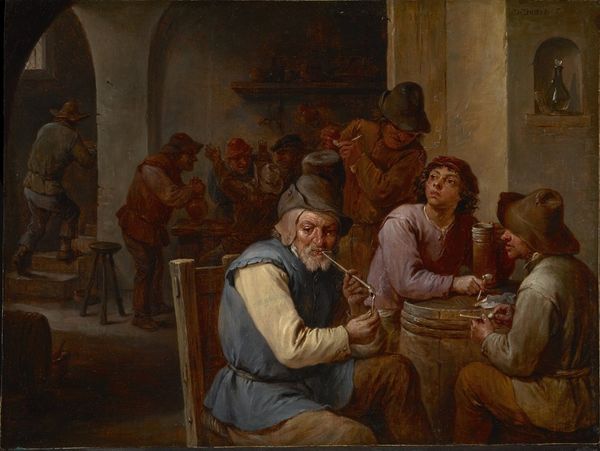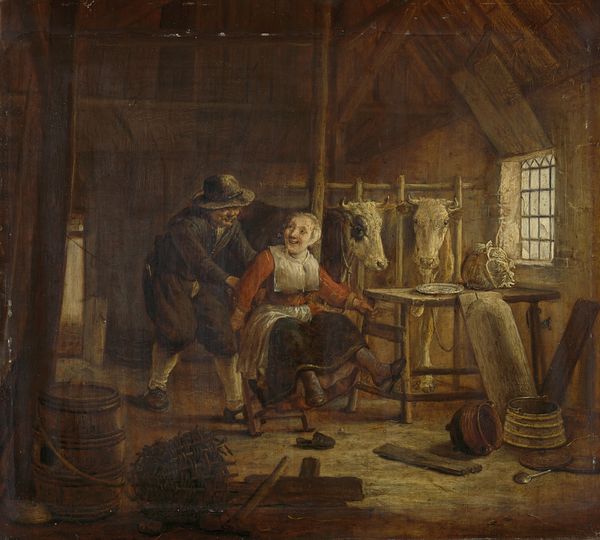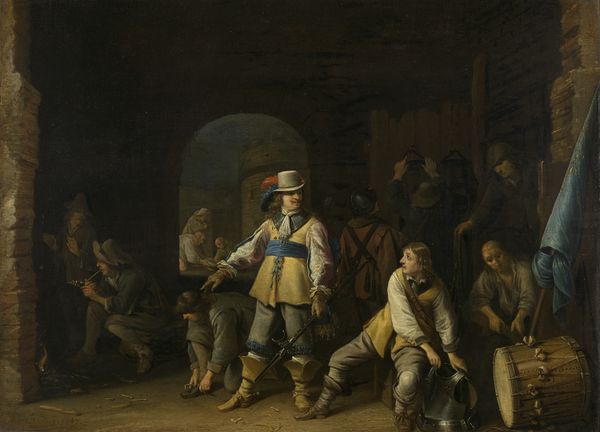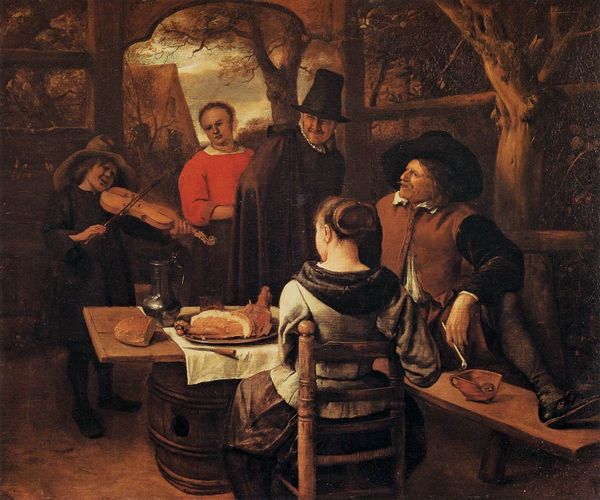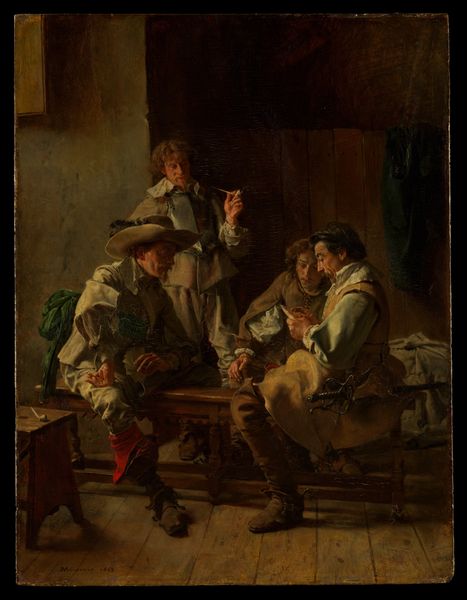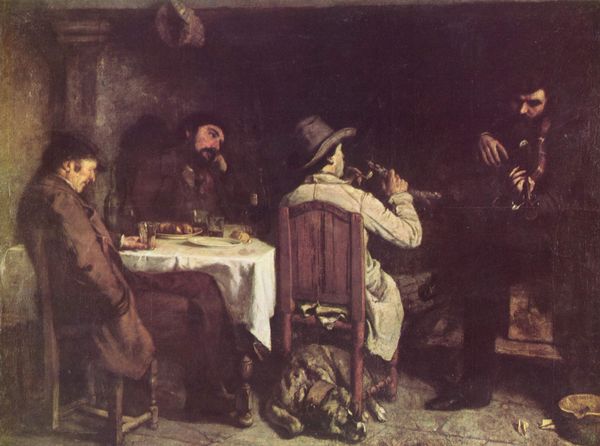
oil-paint
#
portrait
#
dutch-golden-age
#
oil-paint
#
oil painting
#
genre-painting
Dimensions: 50 x 42 cm
Copyright: Public domain
Editor: This is Pieter de Hooch’s “Happy Drinker,” painted around 1650, using oil paint. It seems like a jovial scene, but something about the lighting also makes it feel staged. How do you interpret this work? Curator: The Dutch Golden Age wasn't golden for everyone. De Hooch often depicted domestic interiors, but these tavern scenes reveal another layer of Dutch society. Note the contrast – the bright, celebratory figure versus the others seemingly lost in contemplation or shadowed by their hats. Who is allowed joy and who is not? Who profits from it? Editor: I see what you mean. It's not just a simple drinking scene then. Curator: Exactly! Consider the economic disparity of the time. Was the "happy drinker" genuinely carefree, or was this exuberance masking deeper social tensions? This was painted around the end of the Thirty Years' War - how does it play with ideals of gender, class, and "nation" in this context? Who had the privilege of leisure and pleasure during that period, and at whose expense? Editor: That shifts my perspective completely! It's easy to see it as just a snapshot of everyday life, but there's so much more happening underneath. Curator: De Hooch's skillful use of light and shadow further underscores this division. The brightest light falls upon the drinker, almost highlighting his status. Is he oblivious, or complicit? By considering those questions, we can understand how this painting both reflected and shaped social norms. Editor: This reminds me to always question the narratives presented by artworks. Thank you for pointing out the layers of social commentary embedded within it! Curator: Art is never made in a vacuum; it reflects and influences our understanding of the world around us, past and present.
Comments
No comments
Be the first to comment and join the conversation on the ultimate creative platform.
